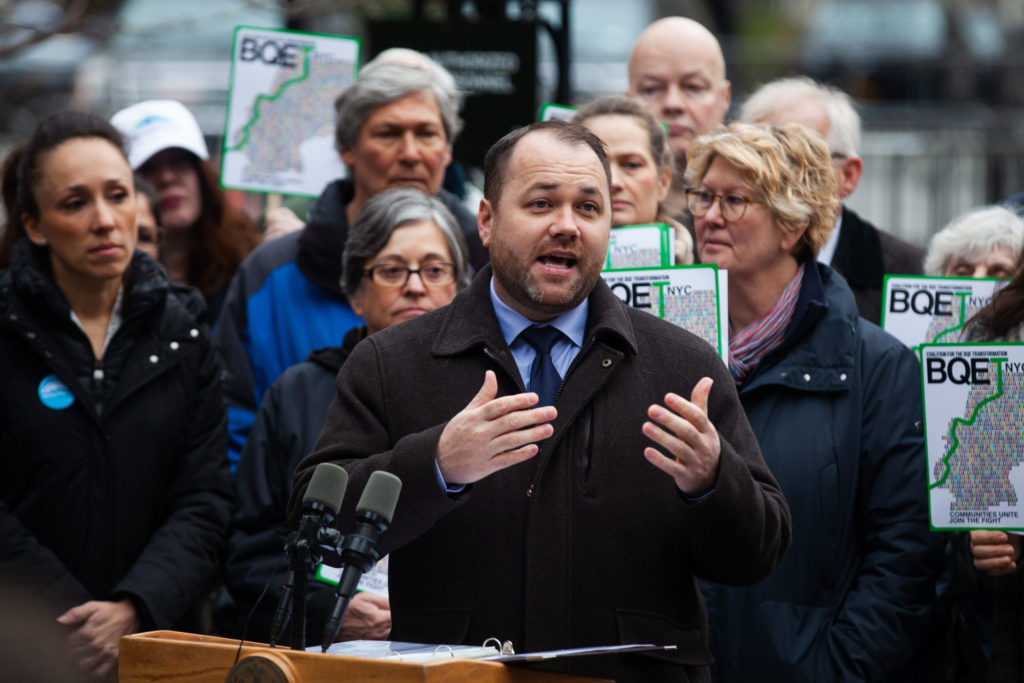BQE project too big for NYC alone, says City Council

The job of rebuilding the Brooklyn-Queens Expressway is just too big, too multijurisdictional and too expensive for New York City to take on by itself, speakers testified at a packed New York City Council oversight hearing on Tuesday.
Speakers said Mayor Bill de Blasio and Gov. Andrew Cuomo are going to have to work together to accomplish one of the biggest infrastructure projects in city history: replacing a 1.5-mile section of the interstate between Sands Street and Atlantic Avenue that carries 153,000 vehicles a day, including 25,000 trucks hauling freight.
Officials also said that the concept must be widened to include not just the triple cantilever underpinning the Brooklyn Heights Promenade, but the entire expanse of the I-278 corridor.